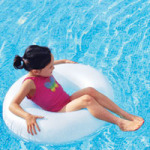Supervise Kids Using Playground Equipment
- Actively supervise children on playgrounds. It won’t be hard – they’ll probably be calling for you to watch them climb, jump and swing.
- Check playgrounds where your children play. Look for age-appropriate equipment and hazards, such as rusted or broken equipment and dangerous surfaces. Report any hazards to the school or appropriate local office.
- Teach children that pushing, shoving or crowding while on the playground can be dangerous.
- Dress appropriately for the playground. Remove necklaces, purses, scarves or clothing with drawstrings that can get caught on equipment and pose a strangulation hazard. Even helmets can be dangerous on a playground, so save those for bikes.
- Little kids can play differently than big kids. It is important to have a separate play area for children under 5.
Choose the Right Play Area Based on Your Child’s Age
- Ensure that children use age-appropriate playground equipment. Separate play areas for bigger kids and children under 5 should be available and maintained.
- For babies who are mostly crawling or at best learning to walk, the play area should have a smooth and easy surface to walk on.
- If your baby has fairly good head control and can sit up with support (usually around 9 months old), give the baby (bucket-shaped) swings a try.
- Babies love slides but are too young to go down on their own. But they can slide down with your support. Just hold your baby all the way down and enjoy.
Information provided by Safekids.org


